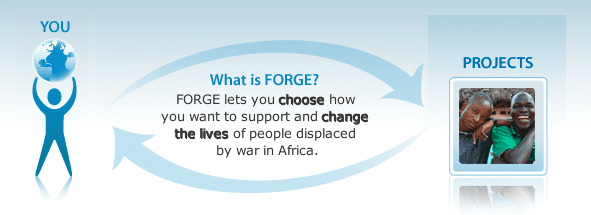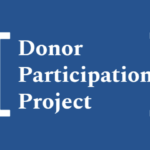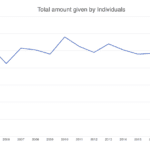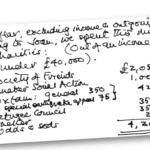Even if you build it, they might not come
If your head has been turned by the success of Kiva and you are thinking about how your charity might set up a similar direct giving product you need to know about FORGE.
FORGE was set up by Kjerstin Erickson, a Stanford University student, who spent a summer working at a refugee camp in Botswana. At the age of just 20, she decided to do something about the problems she had seen first hand and set up her own charity – FORGE.
The idea behind FORGE was simple – recruit and train US college based volunteers to work in partnership with refugees living in camps in Zambia and Botswana.
Over the last 5 years, FORGE has implemented more than 60 community development projects, it has a full-time staff of over 150 and has worked with communities of over 70,000 refugees.
Their fundraising model was simple. Each US student that wished to participate had to raise a minimum of $5,000 for the project. Over 50% of FORGE’s running costs were covered in this simple way.
However, FORGE changed the way it worked. Rather than use students, the charity placed the control of designing and implementing the
projects directly in the hands of the refugees.
FORGE had great results on the ground and it was predicted that the funding gap could be filled through grants from trusts and other institutions. This, for various reasons, didn’t happen and FORGE was left with a big financial hole to fill.
Kjerstin’s response was to adopt the social networking fundraising model of organisations like Kiva and donorschoose. Their models were
carefully studied and forgenow.org was created. It offered the opportunity to give a small gift – that would be added to donations from other individuals – to fund whole projects. Each of which was illustrated with great stories on the forgenow site
Just check the similarities out between Kiva and FORGE’s online mission graphics, to see just how closely FORGE had been looking at the KIVA model (note: FORGE will be changing their graphic so it may soon be disappearing from their site).
It didn’t work. They had a couple of mentions on CNN (Thanks Sundeep) but didn't get the same media coverage as the organisations they based their strategy on.
As of November the 8th (which was nearly six months after launch date) there were 25 projects available for funding.
Sara Hall from New Philanthropy Advisors undertook a review and found that:
- 8 projects hadn’t received a penny
- 17 projects were funded or partially funded through gifts
that were predominantly from FORGE staff - 23 of the total 34 contributions listed were from FORGE or
its three current paid staff members. - 11 were from outside contributors.
With a $100,000 shortfall, Kjerstin decided to blog about the problem she faced. She was totally honest and open about her situation and it was picked up by Tactical Philanthropy blogger, Sean
Stannard-Stockton.
Sean put her in touch with Curtis Chang, CEO of Consulting Within Reach who has been blogging on his thoughts and findings as he tries to get FORGE back onto an even keel with some very interesting references to Star Wars and Flash Gordon.
It’s not often that you can get so much free advice on implementing a brand new funding model. And if you want to find out exactly what has happened, I’d suggest a visit to Tactical Philanthropy and Social edge. Watching the drama unfold is not unlike watching an online soap opera.
I don't think I'll be spoiling anything by saying that by the 12th of December, FORGE had already covered 55% of its shortfall and, as of today, got at least one new funder onboard.











